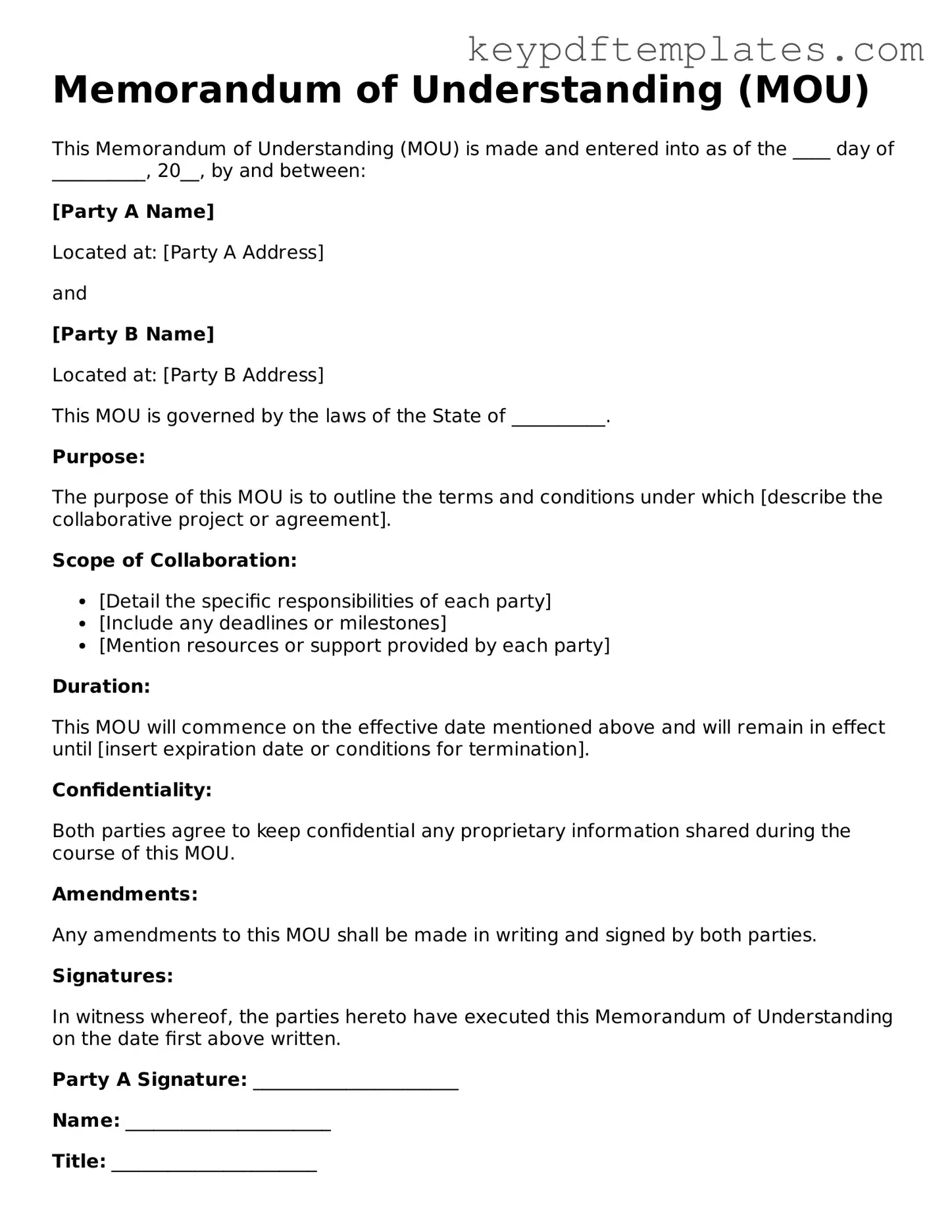Printable Memorandum of Understanding Template
A Memorandum of Understanding (MOU) is a formal agreement between two or more parties that outlines their intentions and the terms of their collaboration. This document serves as a foundation for establishing mutual understanding and expectations without creating legally binding obligations. Typically, MOUs are used in various contexts, such as business partnerships, governmental agreements, and nonprofit collaborations.
Modify Document Online
